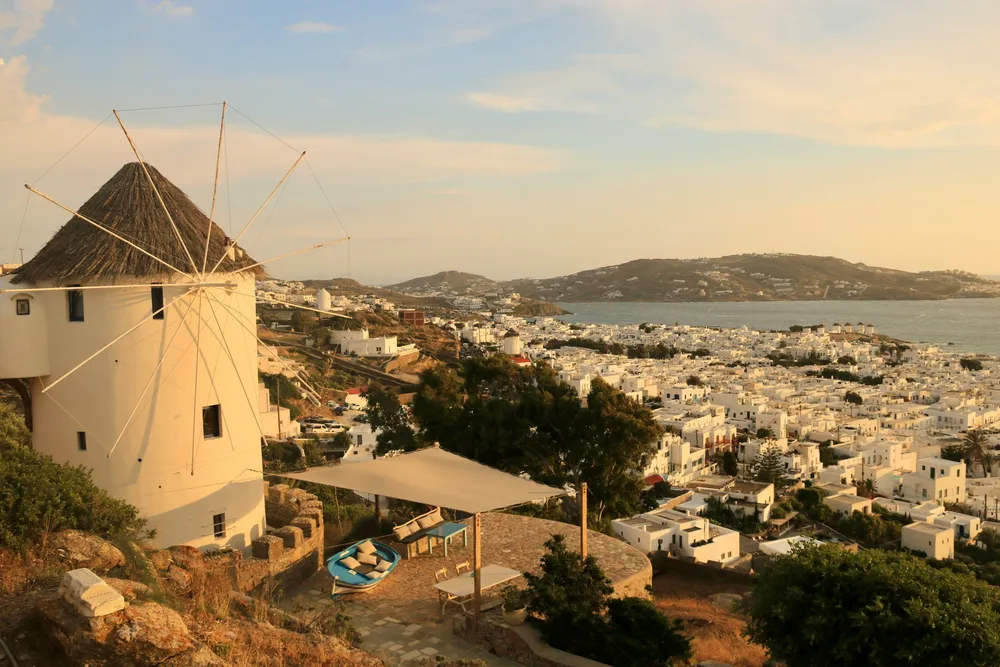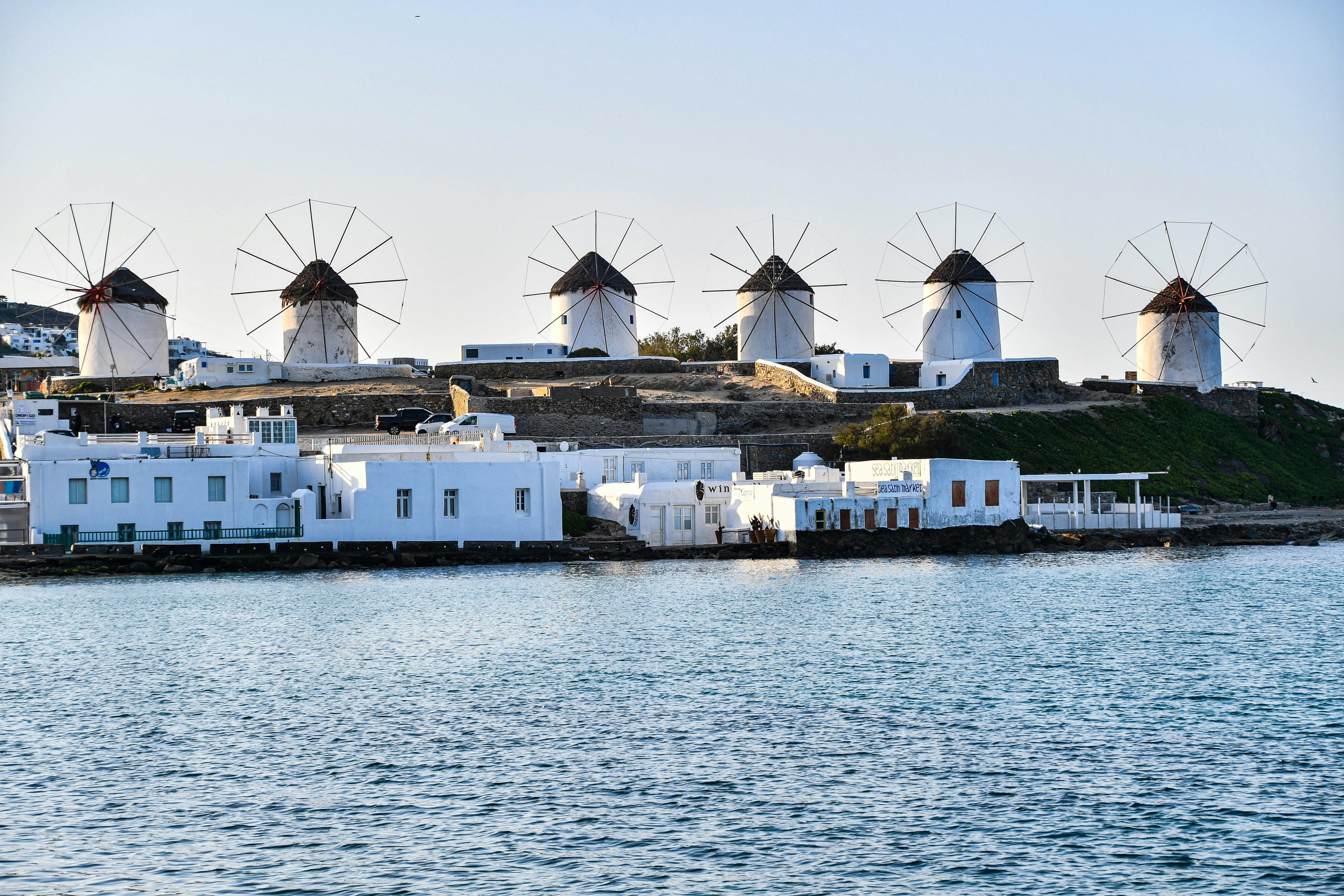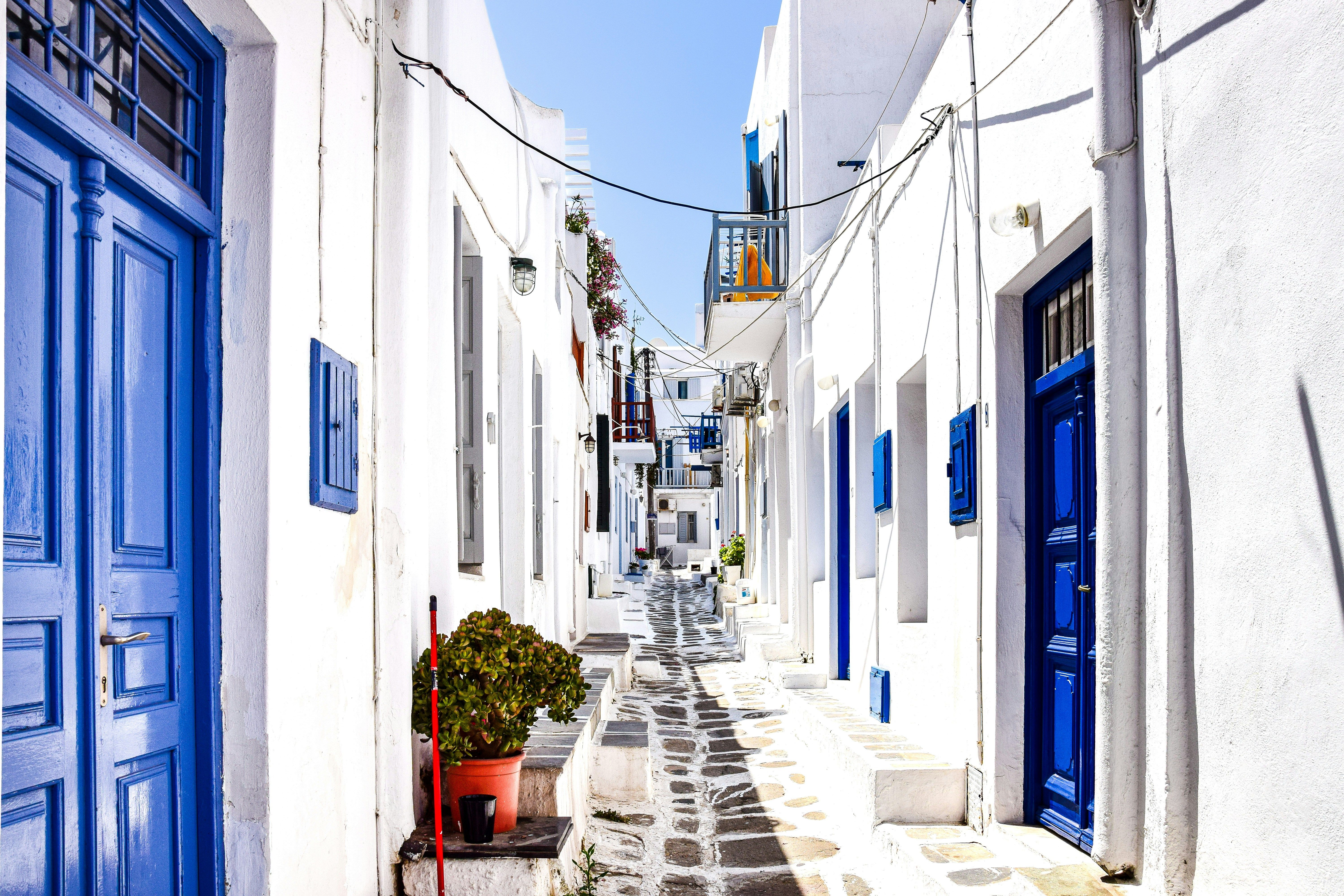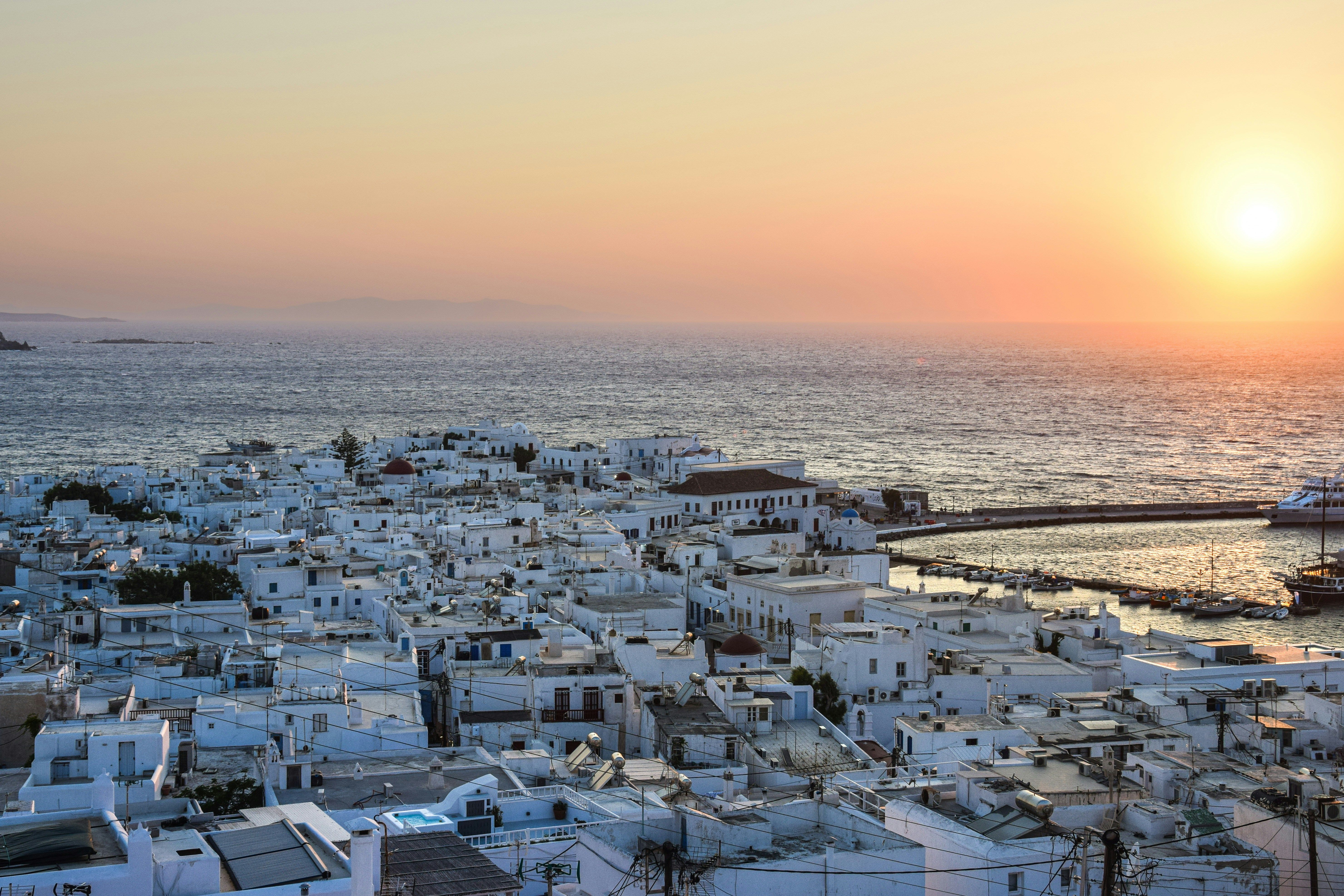Travelling from Heraklion to Mykonos: Complete Ferry & Travel Guide
Travel Guides
Travel Guides


Planning a journey from the historic port of Heraklion to the cosmopolitan island of Mykonos? This popular Greek island-hopping route connects Crete's capital with one of the most famous Cycladic islands, offering travellers stunning Aegean views along the way. While flights between these destinations might require connections through Athens, taking a ferry provides a direct and scenic alternative. This comprehensive guide covers everything you need to know about travelling from Heraklion to Mykonos, with a focus on ferry services, port information, and what to expect when you arrive. Whether you're planning a day trip or a longer stay, we've got all the essential information to help you plan the perfect Greek island adventure.
When planning your journey from Heraklion to Mykonos, you have several transportation options to consider, with ferries being the most direct route.
Taking a ferry is the most straightforward way to travel between Heraklion and Mykonos. The journey covers approximately 115.7 nautical miles (214.3 km) across the Aegean Sea. Ferries on this route typically sail in around 4 hours and 26 minutes, with SeaJets offering the fastest crossing time of about 4 hours and 20 minutes. During peak season, you can expect around 6 sailings per week, with approximately 29 sailings per month.
Ferry prices for this route average around £240 for a standard ticket, though this can vary depending on the season, cabin type, and whether you're bringing a vehicle. The ferry experience offers a relaxing journey with beautiful sea views, comfortable seating options, and the convenience of arriving directly at your destination without airport transfers.
While direct flights between Heraklion and Mykonos are limited, connecting flights via Athens are possible. However, when factoring in check-in times, potential layovers, and transfers to and from airports, the total journey time can often exceed that of the ferry. Additionally, flights may not offer the same scenic experience or flexibility with luggage that ferry travel provides.
For travellers who prioritise convenience and enjoying the journey itself, the ferry represents an excellent balance of travel time, cost, and experience.
You can take a ferry from Heraklion to Mykonos. Ferries sail in around 4 hours and 26 minutes with about 1 sailing a day. The fastest ferry sails in around 4 hours and 20 minutes and is provided by SeaJets. Ferry prices can range around £240 depending on season and whether you choose a standard or premium service. Departures start at 08:00, with the last departure from Heraklion to Mykonos also at 08:00 as there is typically just one daily sailing.
SeaJets is the primary operator on the Heraklion to Mykonos route, offering high-speed ferry services that make the journey as efficient as possible. Their modern fleet provides passengers with a comfortable travel experience across the Aegean Sea.
The company typically operates this route throughout the main tourist season, with consistent service during the summer months when demand is highest. With approximately 6 sailings per week, SeaJets connects these popular Greek destinations with reliable service.

SeaJets vessels serving the Heraklion-Mykonos route offer a range of amenities to make your journey comfortable. Passengers can typically expect:
For a more comfortable experience, we recommend considering premium seating options, which often provide more space, better views, and enhanced service.
To secure the best fares and preferred sailing times, we strongly recommend booking your Heraklion to Mykonos ferry in advance, especially if you're travelling during the high season (June-September). Advance bookings not only guarantee your spot but often come with early booking discounts.
It's advisable to arrive at the port at least 45 minutes before departure to allow time for boarding procedures. If you're travelling with a vehicle, arrival 90 minutes before departure is recommended, though you should check with SeaJets for their specific requirements.
Heraklion Port (Port of Heraklion) is the main maritime gateway to Crete and serves as your departure point for Mykonos. Located close to the city centre, the port is easily accessible and well-connected to other parts of the island.
Getting to Heraklion Port:
Port Facilities:
Mykonos has two main ports: the Old Port (Mykonos Town) and the New Port (Tourlos). Most ferry services from Heraklion arrive at the New Port, located about 2 km north of Mykonos Town.
Getting from Mykonos Port to your destination:
Port Facilities:
Upon arrival in Mykonos, we recommend having your accommodation details readily available and, if possible, arranging transportation in advance, especially during the busy summer months when taxis can be scarce.
Is it possible to visit Mykonos as a day trip from Heraklion? While technically feasible, it presents some challenges that travellers should consider carefully.
With the ferry departing Heraklion at 08:00 and taking approximately 4 hours and 20 minutes, you would arrive in Mykonos around 12:20. Since there's only one daily sailing (which also departs at 08:00 from Mykonos to Heraklion), you wouldn't be able to return on the same day. This makes a traditional day trip impossible with the current ferry schedule.
For a visit to Mykonos from Heraklion, you would need to plan for at least one overnight stay. This actually works in your favour, as Mykonos deserves more than just a few hours to fully appreciate its beauty and attractions.
We recommend a minimum two-night stay in Mykonos if travelling from Heraklion. This would allow you to:
This schedule provides sufficient time to see the main attractions without feeling rushed, while still keeping your trip relatively short if you're on a tight schedule.
If you're determined to see Mykonos but truly cannot stay overnight, consider these alternatives:
Remember that Greek island travel is best enjoyed at a relaxed pace, and rushing between islands can diminish the experience. We generally recommend allowing enough time to truly appreciate each destination.

1. Mykonos Town (Chora)
The island's picturesque main town is a maze of narrow whitewashed streets, colourful doors, and cascading bougainvillea. Don't miss Little Venice with its waterfront houses, the iconic windmills, and Paraportiani Church. Visiting hours: Always accessible, though shops typically open 10:00-22:00 in season.
2. Delos Archaeological Site
A short boat ride from Mykonos harbour takes you to this UNESCO World Heritage site, the mythological birthplace of Apollo and one of Greece's most important archaeological sites. Visiting hours: Tuesday-Sunday 08:00-20:00 (closed Mondays).
3. Paradise and Super Paradise Beaches
Mykonos is famous for its beaches, with Paradise and Super Paradise being among the most popular for their crystal-clear waters, golden sand, and vibrant atmosphere. Visiting hours: Accessible all day, with beach clubs operating from morning until late night.
4. Ano Mera Village
Located in the centre of the island, this traditional village offers a glimpse into authentic Greek island life. Visit the 16th-century Panagia Tourliani Monastery with its intricate wooden altar screen. Visiting hours: Village accessible anytime; monastery open 09:00-19:00.
5. Maritime Museum
Housed in a traditional Mykonian building, this museum showcases the island's rich maritime history through ship models, maps, and navigation instruments. Visiting hours: April-October 10:30-13:00 and 18:30-21:00.
Mykonos Town (Chora) - The heart of the island, combining shopping, dining, nightlife, and cultural attractions in one picturesque package. Perfect for wandering, photography, and soaking up the atmosphere.
Little Venice - A romantic neighbourhood where buildings hang over the sea, offering some of the island's best sunset views and a concentration of bars and restaurants.
Ano Mera - The island's second-largest settlement provides a more authentic, less touristy experience with local tavernas and a traditional village square.
Beach Areas - Each beach on Mykonos has its own character: Psarou and Ornos for luxury and comfort, Paradise and Super Paradise for parties, Agios Ioannis and Kapari for tranquility.
Tourlos - The area around the New Port has developed into its own district with accommodations and services catering to arriving and departing travellers.
Mykonos enjoys a typical Mediterranean climate with distinct seasons that can significantly impact your visit.
Summer (June-September): Peak season brings hot, dry weather with temperatures averaging 25-30°C (77-86°F). July and August are the hottest months, with virtually no rainfall and clear blue skies. The famous Meltemi winds often blow during this period, providing natural cooling but occasionally affecting ferry schedules.
Spring (April-May): A delightful time to visit with mild temperatures between 15-25°C (59-77°F), fewer crowds, and the island in bloom. Occasional rainfall is possible but generally brief.
Autumn (October-November): Similar to spring, autumn offers pleasant temperatures around 15-25°C (59-77°F) with gradually increasing chances of rainfall as November approaches. The sea remains warm enough for swimming well into October.
Winter (December-March): Mykonos becomes quiet during winter, with temperatures ranging from 10-15°C (50-59°F) and increased rainfall. Many businesses close, and ferry services become less frequent.
Weather conditions can significantly affect ferry operations between Heraklion and Mykonos:
We recommend checking weather forecasts before your journey and considering travel insurance that covers ferry cancellations, especially if travelling outside the peak summer season.
Mykonos has a reputation as one of Greece's more expensive islands, but with proper planning, you can enjoy this glamorous destination on various budgets.
Mykonos is generally more expensive than many other Greek islands, including Crete. Prices peak during July and August and are considerably lower during shoulder and off-season.
Budget traveller: £100-150 per day
Accommodation in hostels or budget rooms (£40-70), eating at gyros shops and basic tavernas (£30-40), public buses for transportation (£10), and free or low-cost activities like beaches and walking tours.
Mid-range traveller: £150-300 per day
Standard hotel or rental apartment (£100-200), mix of tavernas and mid-range restaurants (£50-80), occasional taxi use (£20), and paid attractions and activities (£30-50).
Luxury traveller: £300+ per day
Luxury hotel or villa (£300+), fine dining restaurants (£100+), private transfers or car rental (£50+), and premium experiences like yacht trips or VIP beach clubs (£100+).
The ideal time to visit Mykonos depends on your preferences for weather, crowds, prices, and the type of experience you're seeking.
This is when Mykonos truly comes alive, offering the full island experience:
Best for: Party-goers, those who want the full Mykonos experience, and travellers who don't mind crowds and higher prices.
Many experienced travellers consider this the ideal time to visit:
Best for: Couples, photographers, those seeking a balance of good weather and value, and travellers who prefer a more authentic experience.
A completely different side of Mykonos:
Best for: Budget travellers, those seeking solitude, and visitors interested in experiencing local island life.
For travellers coming from Heraklion, we particularly recommend late May to early June or September, when you can enjoy excellent weather, reasonable prices, and reliable ferry connections without the extreme crowds of peak season.

After your 4-hour ferry journey from Heraklion, you'll want to settle into comfortable accommodation on the stunning island of Mykonos. The island offers a range of options to suit all budgets and preferences.
For budget-conscious travellers, look for guesthouses and budget hotels in Mykonos Town (Chora), particularly in the less touristy areas like Lakka. These typically range from £50-100 per night in peak season. Solo travellers might enjoy the social atmosphere of hostels like MyCocoon Hostel in Mykonos Town.
Couples seeking romance should consider boutique hotels in Little Venice or Mykonos Town, where you can enjoy stunning sunset views. These typically start from £150 per night.
Families often prefer the more spacious and quieter beach areas like Ornos or Platis Gialos, where family-friendly resorts offer convenient amenities and easy beach access. Vacation rentals are also abundant, providing more space and self-catering options from £120 per night.
For the best rates, we recommend booking your accommodation at least 3-4 months in advance, especially if you're travelling during the peak summer months when Mykonos is at its busiest.
Navigating Mykonos is relatively straightforward with several transportation options available to explore this beautiful Cycladic island.
The public bus service on Mykonos is efficient and affordable, connecting Mykonos Town to most popular beaches and villages. Buses run frequently during summer months with fares around €2 per journey. The main bus station is located near the Old Port in Mykonos Town.
Taxis are readily available but limited in number. Expect to pay around €10-20 for short journeys. During peak season, pre-booking is advisable as demand is high.
Renting a car, scooter, or ATV gives you the freedom to explore at your own pace. Daily car rental rates start from approximately £40, whilst scooters and ATVs are cheaper alternatives from £20 per day. Most rental agencies are located in Mykonos Town and at the airport.
Many areas of Mykonos Town are pedestrianised, making walking the best option for exploring its charming narrow streets. For beaches further afield, water taxis operate regularly during summer months, offering a scenic alternative to road travel.
Travelling from Heraklion to Mykonos by ferry offers a wonderful opportunity to experience two of Greece's most captivating destinations. The journey itself becomes part of your adventure, with SeaJets providing the fastest crossing at approximately 4 hours and 20 minutes.
With daily sailings departing at 8:00 AM, the ferry service is reliable and convenient, allowing you to maximise your time on both islands. While the average ticket price of around £240 might be higher than some other Greek island routes, the experience of arriving into Mykonos by sea, with its iconic windmills and whitewashed buildings gradually coming into view, is truly priceless.
Whether you're seeking the historical wonders of Crete or the cosmopolitan atmosphere of Mykonos, this sea route perfectly connects these contrasting Greek experiences. Book your ferry tickets in advance, especially during the busy summer months when the weekly six sailings can fill up quickly, and prepare for an unforgettable Mediterranean island-hopping adventure.